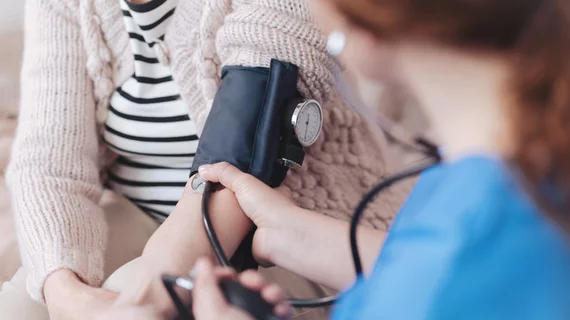20-minute ultrasound-guided procedure could cure hypertension
A minimally invasive ultrasound-guided procedure could provide a viable treatment alternative to surgery for a common cause of high blood pressure.
Hypertension caused by unilateral aldosterone-producing adrenal adenomas (APAs) is curable by laparoscopic removal of the entire adrenal gland. However, the invasiveness of the procedure and the recovery timeline attached to it could deter many patients who would benefit from it. A new paper in The Lancet details the potential for endoscopic ultrasound-guided trans-gastric radiofrequency ablation (EUS-RFA), also known as Targeted Thermal Therapy or Triple T, as an alternative treatment for APAs of the left adrenal gland.
Triple T spares the adrenal gland by ablating the nodules that produce excess aldosterone. With the help of molecular imaging, providers are able to locate even the smallest of nodules. Once the nodules are pinpointed, radiologists can guide an endoscopic camera and ultrasound into the stomach, which is located near the left adrenal gland. From there, a tiny needle is inserted from the stomach into the problematic nodule, where radiofrequency is used to destroy it while also sparing the surrounding healthy tissue. The entire procedure takes 20 minutes.
In a clinical trial (called FABULAS) in the United Kingdom, the procedure was shown to be safe and effective. Three months after the procedure, 75% of the study’s participants appeared to be either completely or partially biochemically cured, based on reduced radiotracer uptake of the area on PET imaging. Around half of the participants were completely or partially cured of their hypertension.
The authors of the Lancet paper described their findings as “pivotal” when it comes to the development of minimally invasive and effective treatments for hypertension.
"It is 70 years since the discovery in London of the hormone aldosterone and, a year later, of the first patient in the U.S. with severe hypertension due to an aldosterone-producing tumor,” Professor Morris Brown, co-senior author of the FABULAS study and professor of endocrine hypertension at Queen Mary University of London, and colleagues noted. “This patient's doctor, Jerome Conn, predicted, with perhaps only minor exaggeration, that 10%–20% of all hypertensions might one day be traced to curable nodules in one or both glands. We are now able to realize this prospect, offering 21st century breakthroughs in diagnosis and treatment."
The FABULAS trial paved the way for a larger study further testing the procedure’s efficacy. Results from the WAVE trial are expected to be available in 2027.
Learn more about the study’s findings here.

